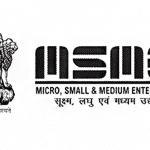The Panchayati Raj System is a process through which people participate in their own government. It is the first tier or level of a democratic government.
Three levels of Panchayats
- Gram Panchayat
- Panchayat Samiti
- Zila Parishad
The Gram Panchayat:
- The Gram Sabha is a meeting of all adults who live in the area covered by a Panchayat.
- The area could be only one village or a few villages.
- Anyone who is 18 years old or more and who has the right to vote is a member of the Gram Sabha.
- Every village Panchayat is divided into wards, i.e. smaller areas.
- Each ward elects a representative who is known as the ward member (Panch).
Also Read: शरीयत और मुस्लिम पर्सनल लॉ: आपके जानने योग्य तथ्य
- All the members of the Gram Sabha also elect a Sarpanch who is the Panchayat President.
- The Ward Panchs and the Sarpanch form the Gram Panchayat which is elected for five years.
- The Gram Panchayat has a Secretary who is also the Secretary of the Gram Sabha. This person is not an elected person but is appointed by the Government. He is responsible for calling the meeting of the Gram Sabha and Gram Panchayat and keeping a record of the proceedings.
- The Gram Sabha is a key factor in making the Gram Panchayat play its role and be responsible.
- It is the place where all plans for the work of the Gram Panchayat are placed before the people.
- The Gram Sabha prevents the Panchayat from doing wrong things like misusing money or favoring certain people .
- It plays an important role in keeping an eye on the elected representatives and in making them responsible to the persons who elected them.
- The Gram Panchayat meets regularly and one of its main tasks is to implement development programmes for all villages that come under it.
Also Read:How does the monsoon affect the economy?
- The work of the Gram Panchayat has to be approved by the Gram Sabha.
- Gram Sabha often form committees like construction and development committees. These committees include some members of the Gram Sabha and some from the Gram Panchayat who work together to carry out specific tasks.
The work of a Gram Panchayat includes:
- The construction and maintenance of water sources, roads, drainage, school buildings and other common property resources.
- Levying and collecting local taxes.
- Executing government schemes related to generating employment in the village.
Sources of funds for the Panchayat:
- Collection of taxes on houses, market places etc.
- Government scheme funds received through various departments of the government- through the Janpad and Zila Panchayats.
- Donations for community works etc.
- The Panchs and the Gram Panchayat are answerable to the Gram Sabha who elected them.
- The idea of people’s participation in the Panchayati Raj System extends to two other levels.
- One is the Block level, which is called the Janpad Panchayat or the Panchayat Samiti.
- The Panchayat Samiti has many Gram Panchayats under it.
- Above the Panchayat Samiti is the District Panchayat or the Zila Parishad.
- The Zila Parishad actually makes developmental plans at the district level.
- With the help of Panchayat Samitis, it also regulates the money distribution among all the Gram Panchayats.
- Within the guidelines given in the Constitution each state in the country has its own laws with regard to Panchayats.











